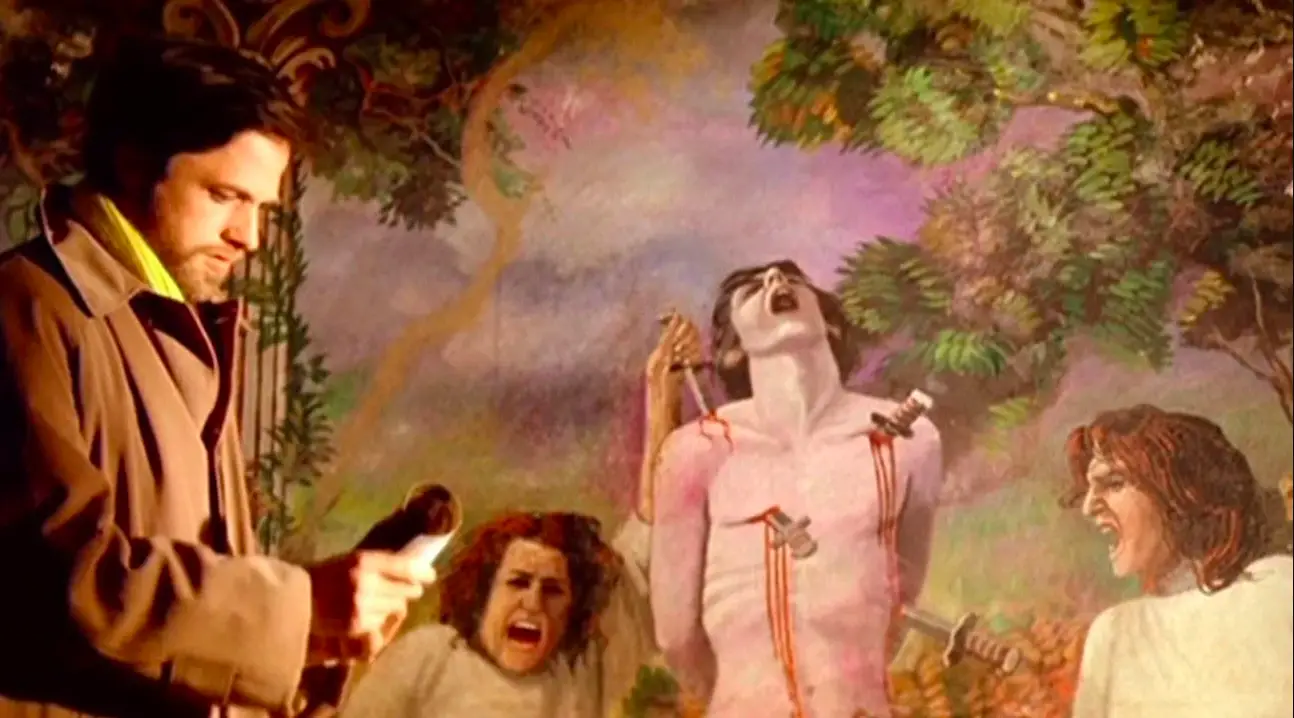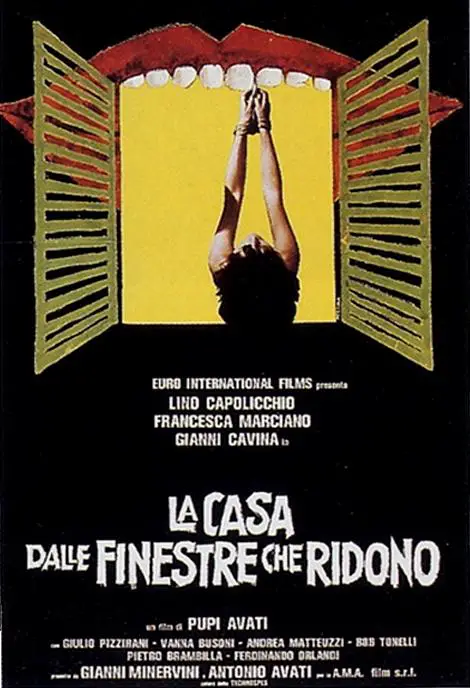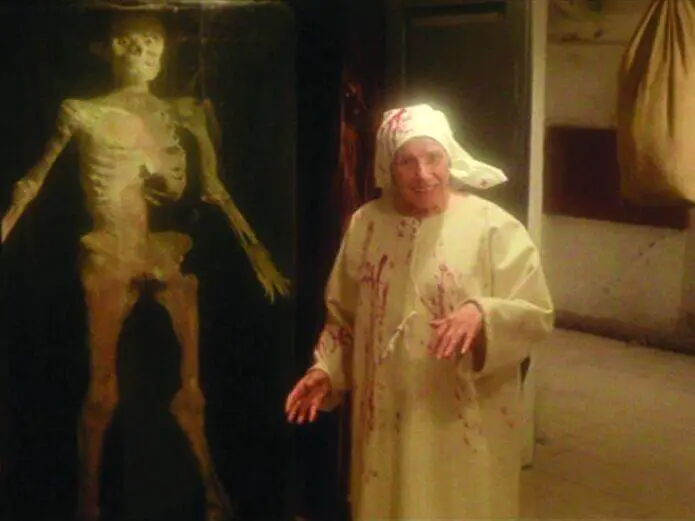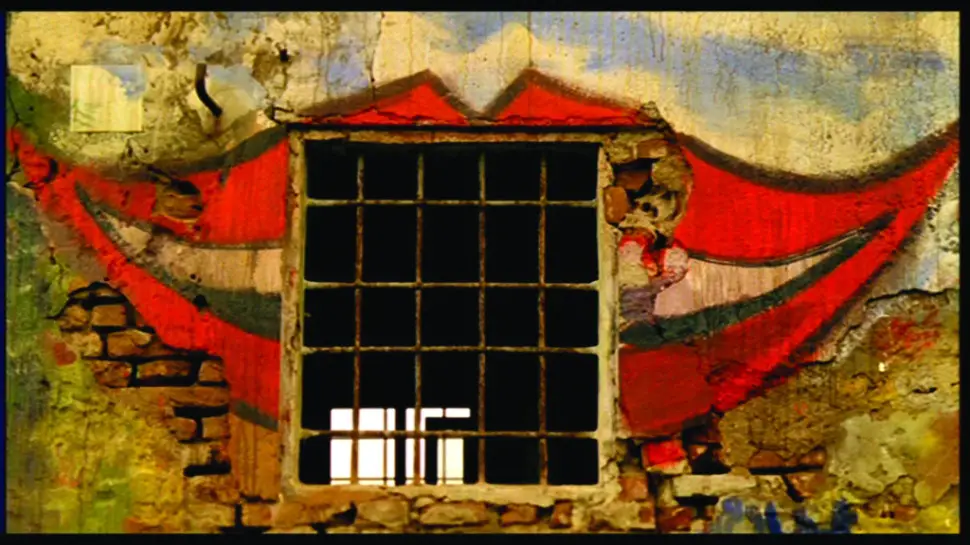Exactly 45 years ago, on August 16, 1976, "The house with laughing windows", the cult-movie by Pupi Avati ascribable to the so-called vein of the «Padano Gothic». In the film, the disturbing element of the peasant culture in which the Emilian director grew up and more exotic black suggestions, from Caribbean macumbas to self-sacrifice shared by the mystic and the madman, converge.
di Marco Maculotti
Originally published on INLAND: Pupi Avati, n. 10/2019, Bietti Publisher
"The first fear I felt is certainly linked to the rural tale and the relationship with death, which always recurs in peasant culture" [1], was able to confess Pupi Avati, revealing the first source from which his very personal poetics arose: that of "Gothic padano", a definition coined by industry experts to describe his peculiar homemade way of making horror films. A horror not nocturnal and dark, but rather panic e meridian, which hits its intended victim (the spectator) perpendicularly like the sun at its zenith in the countryside of Emilia-Romagna. An atavistic terror that sometimes emerges through the exhibition meshes of peasant tales told around the fire, on winter evenings, from the oldest to the youngest: precisely from that listening, Our was able to distill precious material for the purpose of building his very personal horror narrative system.
One must therefore think not of mere psychological madness, comparing himself with the painter Buono Legnani of The house with laughing windows: at a certain point in the film one speaks explicitly, referring to the nefarious work of these in league with the depraved sisters, of "sacrificial communions", from "rites based on human sacrificesAnd of the "possibility that even today men can find contact with the dead through these practices", adding later that the three had come into contact with such forbidden practices in Brazil, where they had spent their childhood.

Ideally crossing the Atlantic and somehow syncretizing local folk traditions with Afro-American and Caribbean ones, Avati took inspiration from a series of journalistic alarms which, starting from the last twenty years of the nineteenth century, Brazilian newspapers dealt with: testimonies on 'existence of "night sessions" and of fetishes, on the ambiguity of the practices and tools used - monstrous idols, unknown roots and suspicious liquids. It was then that we began to talk about "priests of evil cults","possession sessions"(macumbas) and "cursed associations", whose nocturnal rites were inspired by black spiritism of sub-Saharan origin and the adoration of orishas [2].
Esoteric suggestions ed exotic that the Italian cinema of those years adequately exploited with a handful of films, halfway between canonical horror and world movie, inspired by the traditional beliefs and ancestral rituals of those populations considered in some way "primitive" still in the second half of the twentieth century. Among the most deserving results are to be mentioned The serpent god by Piero Vivarelli (1970), The land of wild sex by Umberto Lenzi (1972) and The perfume of the lady in black by Francesco Barilli (1974).

Human sacrifices, as mentioned, are also involved in The house with laughing windows: as the narrative progresses, in fact, we discover how the young man who posed for the fresco of San Sebastiano was immolated by the mad painter with the complicity of his sisters, in the same way as many others whose first name. Nonetheless, we must not forget that the first sacrificial victim of the nefarious Emilia-Romagna rituals in question in the film is just the same. Good Legnani, whose immolation leads him to continue his existence in the Elsewhere of the Dead and of the disembodied spirits, from which he continues his own personal and ghostly conversation with the kinsmen.
On the one hand sacrifice and on the other, therefore, self sacrifice: the painter sprinkles himself with petrol and sets himself on fire, in an extreme gesture attributable to the entropic sphere of kaos magic which recalls the demonstrative actions of Buddhist monks in protest first against the Chinese occupation of Tibet, then against the US war in Vietnam. In doing so he did eternalize ritually in the act of transmuting into the funeral pyre that he will mark its ontological passage from the human condition to that larval and its reduction, simultaneously, to a skeleton and a spirit. It is good to remember, in this regard, how shamanic traditions teach that through meditation on the skeleton (which is at the same time what the entire human body is initially formed from and what remains at the end of the earthly experience) the shaman can ecstatically reach the world of spirits (which is also a realm of the dead), at the same time the Origin and the End of everything (exactly like the skeleton for the human being) and thus overcome the human condition himself.

More: Buono Legnani babbles, as if it were a "mount" for a loa Caribbean of colors that come out of his veins; is Terence mckenna reports of jivaro shamans, an Amerindian tribe living in the tangle of the Ecuadorian Amazon, who would be able to release, in a state of trance induced by the ingestion of ayahuasca, a sort of "purple or dark blue fluid, directly from the pores of your skin". They base a large part of their magical practice on this substance, thanks to which, spreading it on the ground, they are able to see in front of them "other places and other times" [3] (like the kingdom of the dead that the crazy painter has access to in Avati's film). And again, we can detect Legnani's longing a go back mystically to the Origin of things, sublimating oneself in coincidence oppositorum of masculine and feminine (as well as the sister-priest, interpreted by Eugene Walter), and ideally returning to the "first form" of the Primordial Androgyne, prior to the separation of the sexes and to that - homologous, but placed on a higher archetypal-ontological level - between spirit and matter.
Obviously in the filmic mythopoiesis of Pupi Avati i topoi sacral now call back they look hideously reversed, causing for the Legnani, the sisters and the unfortunate countrymen the precipitation in the most unspeakable nightmare. It follows that, as also happens elsewhere within the cinematographic production of Our - for example in the following Zeder (1983) or in the TV series Voices of the night (1995) - although the characters boldly aim to cross the limit of human existence, they inevitably find themselves trapped in a kind of world totally other, obscure, distant and not geographically framed, since it is placed on a further dimensional plan e mysteriously tremendous [4].

Footnotes:
[1] Statements by Pupi Avati contained in Adamovit Ruggero, Bartolini Claudio, The Po Valley Gothic. Dialogue with Pupi Avati, Le Mani, Recco 2010, p. 49
[2] Gilberto Mazzoleni, Wizards and Messiahs of Brazil, Bulzoni, Rome 1993
[3] Terence McKenna, True hallucinations, ShaKe, Milan 2008, pp. 78-79
[4] Otto Rudolf, The sacred, SE, Milan 2009

4 comments on ““The house with laughing windows”: fetishes and (self) sacrifices"